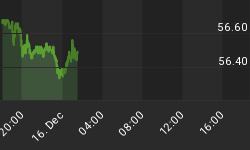The FOMC announcement of March 18, December 16 and September 16 each produced an interventionist surprise at the expense of the dollar. But unlike in the announcements of Sep 16 (AIG bailout) and Dec 16 (Fed's surprising zero interest rate announcement), Wednesday's announcement to buy long term treasuries and expand the purchase of MBS and Agency securities may continue to extend the dollar's retreat, beyond just a few days. My warning for a turn in the dollar emerged shortly after the dollar index failed to break above 89.62 (euro equivalent low at $1.2455), which was a trend line resistance prevailing since the February 2002 high (peak of USD bull market).

So why is it different this time?
1. The Eastern/Central European story haunting the euro was clearly a negative theme for the currency, but such a story would only prove detrimental for the euro in the event of a bankruptcy/implosion of these banks. Absent those events, those fears were confined to grading watch from credit rating agencies, thereby, not justifying prolonged selling in the euro towards the October lows.
2. It is not enough to make the case for the dollar simply based on the premise that the Feds aggressiveness renders the US economy most likely to recover the soonest. The fact that US credit market strains and ongoing macroeconomic spill-over show no signs of abating, justifies that intensity of the US central bank measures as they reflect the critical situation of US markets/economy. Also, recall that part of the Feds liquidity measures have been aimed at shoring up liquidity for foreign central banks.
3. Technically, the ensuing positive correlation between the USD and global equities suggests an acceleration of the dollar sell-off as equities extend their recovery (albeit still deemed a bear market bounce). Indices would have to rally by more than 27%-28% from this months lows to 845-855 in the S&P500, 4,460-4,500 in the FTSE-100, 4,680-4,700 in the Dax-30 and 9,000-9,100 in the Nikkei-225.
These are some of the factors most likely to make yesterdays major Fed action different from the previous two by extending USD weakness (commodity strength) beyond just 2-3 days, and into mid end of April-Mid May. These conditions are especially facilitated by oils' break to 2-mth highs above the 100-day MA for the first time since August and a rally in resource metals (copper at 4-month highs).
What About Gold?
Golds uptrend was bolstered by its ability to hold above the bottom of the 4-month channel pf $880, its ability to limit periodic declines to no more than 10-11%, as well as holding above its 50-day MA. These technical criteria were first brought up on March 6th. Having passed all these tests, I re-iterate the near term target of $1,050.

















